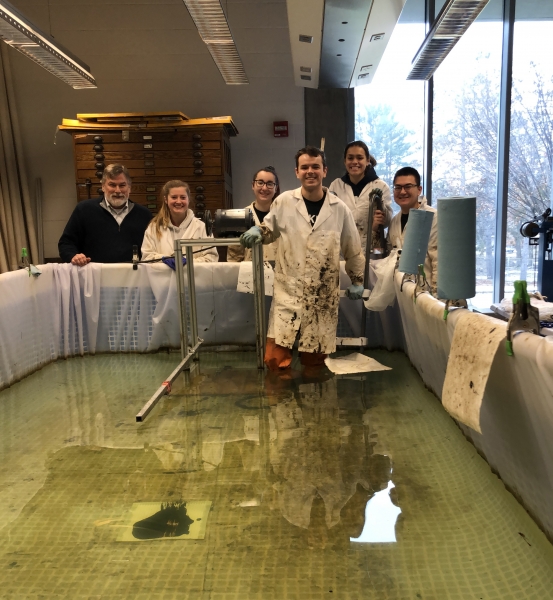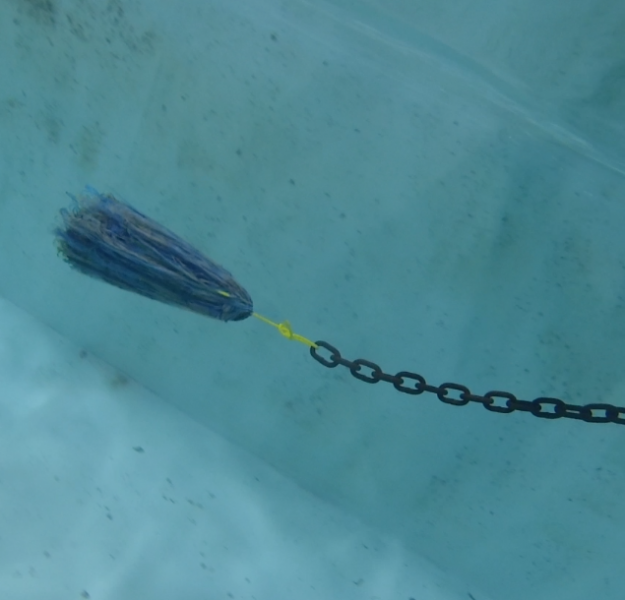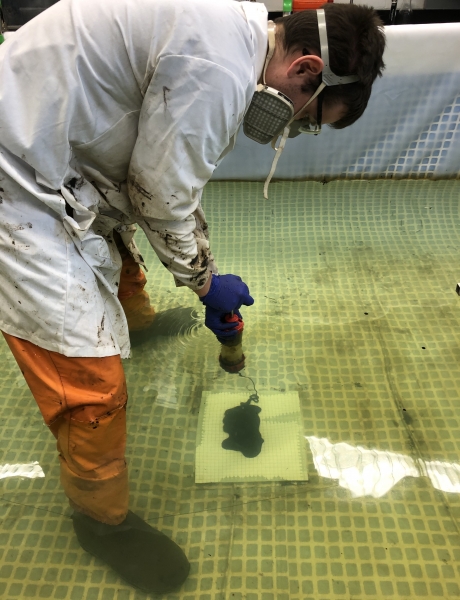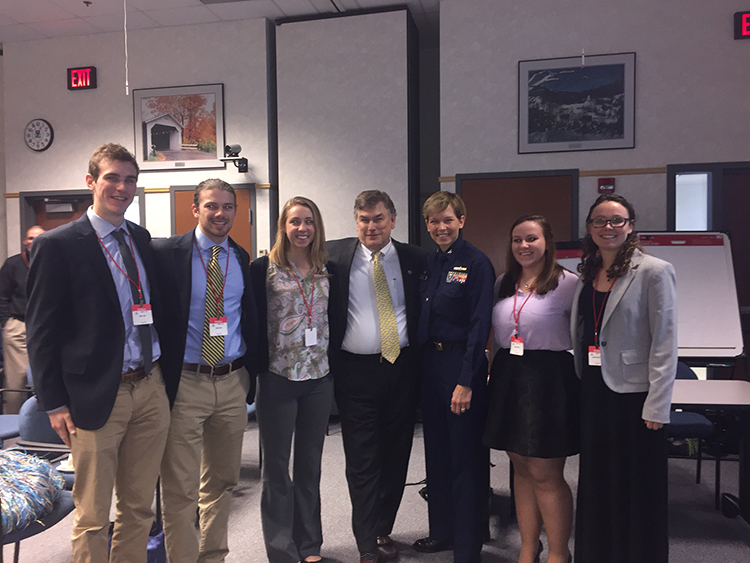Advancement in oil spill response comes in three general flavors — science, engineering, and systems. Systems include management, finance, communications, and human assessment techniques. Science benefits the understanding of resource injury, environmental processes, and risk assessment. Engineering employs science and systems and develops tools.

Some of these tools are complex and obscure such as satellite telemetry, remote sensing devices, and gas chromatographs. These tools require specific expertise to operate and interpret. Other tools combine existing technologies, simple and complex, and are designed to be operated in the field by line response personnel. It is true that a sports car represents the apex of transportation engineering, but that sometimes a horse is the right tool for the job.
New ideas come from new minds. For the past several years, oil spill response experts from NOAA’s Office of Response and Restoration have been working with undergraduates in the environmental engineering program at the University of New Hampshire to examine simple answers to a complex problem. In 2016 professor Nancy Kinner reached out to OR&R for capstone project ideas for a group of her seniors who would have access to a circular flume on campus. This flume was originally designed to accommodate oil testing (it was a gift from Battelle Laboratories where it had been used in sinking oil experiments).
The design ideas needed to be simple, inexpensive, and address a specific operational problem. The accepted project idea came from the senior scientific support coordinator in New England; using “oil snare” to detect and measure submerged oil in the water column and on the bottom. (“snare” is a simple and ubiquitous tool employed at spills to recover heavy, thick, and viscous oil. Resembling a cheerleader’s pom-pom, its oleophilic or “oil-loving” poly-propylene strands shed water and readily absorb oil, employing the significant surface area afforded a pom-pom design.) Snare has been used on a number of sinking oil spills to monitor and detect oil not visible on the surface.

While the technique works well to locate heavy plumes of oil droplets in the water column and even better to discover pooled oil on the bottom, we have had no way of calibrating the rate of oil encountered as a function of the concentration of oil in the water column. Likewise, the success rate of snare dragged through sunken oil has never been measured. Like trying to estimate the number of fallen leaves in one’s yard on a windy night, searching for sunken oil is a “hit or miss'' proposition. Technology such as side-scan or multi-beam sonar have proven to be complicated to use and interpret and, therefore, unreliable. Divers and remotely operated vehicles (ROV) are reliable, but logistically difficult to employ, limited by bottom time and umbilical cords and very expensive.

Dragged snare can be (and has been) deployed offshore across long survey transects by non-technically trained staff. While it is not a quantitative measurement, it serves to verify the presence or absence of sunken pooled oil. Improving our confidence in this technique can better target both more quantitative measurements (divers or ROVs) and oil recovery operations. This technique quickly locates the larger piles of leaves.
Since the beginning of the project, four teams of engineering seniors have been focusing on one aspect or another of this problem and adding to it their own creativity. Each team has had an OR&R Emergency Response Division advisor participating, guiding, and admiring these talented young people. For the first, second, and current year has been the senior scientific support coordinator from New England, Steve Lehmann. Last year, Gary Shigenaka, a senior marine biologist with the division, acted as the advisor.
Where have they gone? What have they discovered? What have they learned?

The 2016 and 2017 teams carefully determined the potential encounter rate of snare towed at different velocities. It also examined the effectiveness of snare to absorb oil at various temperatures.
The 2018 team examined the use of non-commercially manufactured snare for use in under-developed countries. Such materials as poly-propylene shopping bags and mosquito netting were tried.
The 2019 team obtained a testing tank and designed an experimental towing system to test snare pulled across oil in different configurations and at different speeds.
Projects like these, projects that place experienced government professionals in the classroom with engaged and curious students have wide-ranging benefits. The work these teams are doing have already yielded results useful to responders.
We understand performance characteristics of snare pulled at 5 knots. We know household materials can be used in assessment of sunken oil with some level of confidence. We know that snare in the wrong configuration dragged through oil may yield a false negative, but reconfigured it can be a reliable presence/absence test deployable by a non-technical staff. These are results that make a difference and they are only a beginning.

The pairing of NOAA and UNH students has also produced opportunities for the students. The 2017 team presented their findings to the Boston Area Committee and the 2019 team is scheduled to do the same before the Maine/New Hampshire Area Committee. The 2018 team will deliver a paper at this year’s International Oil Spill Conference. In addition, one of the team members became an Arctic Domain Awareness Center graduate fellow and another is beginning a career as a Knauss fellow working with the U.S. Navy on environmental issues. Yet another is completing her doctorate in engineering and will certainly contribute to oil spill response technology.
As the professionals at NOAA and elsewhere age and retire, engaging those interested in pursuing good science and engineering in the name of environmental protection is a societal imperative. Experience is not lost if it is passing along. Our future is bright.
